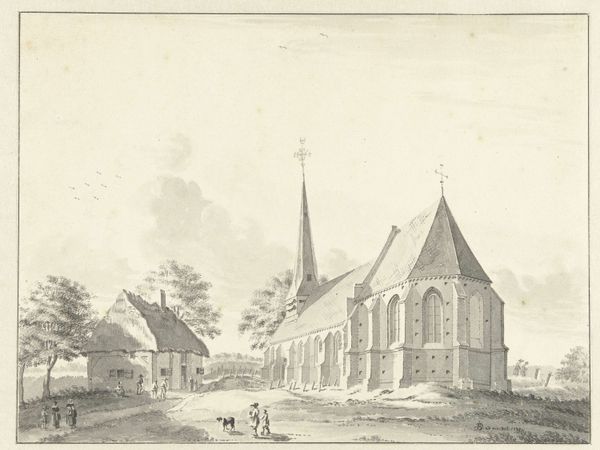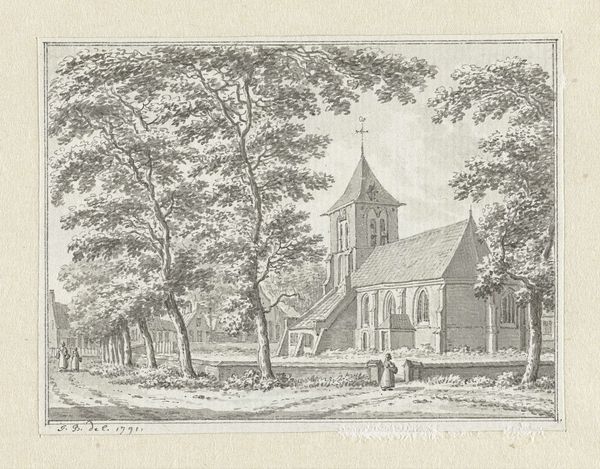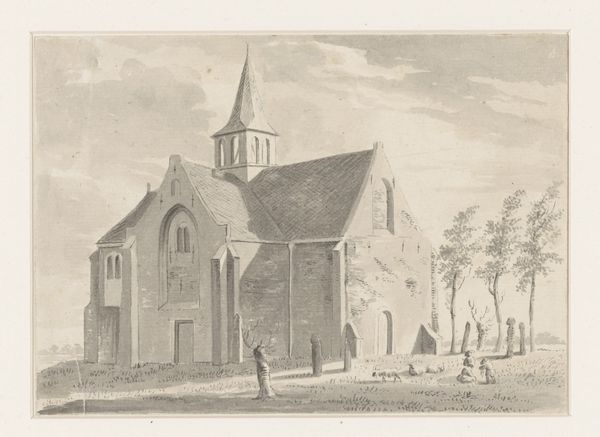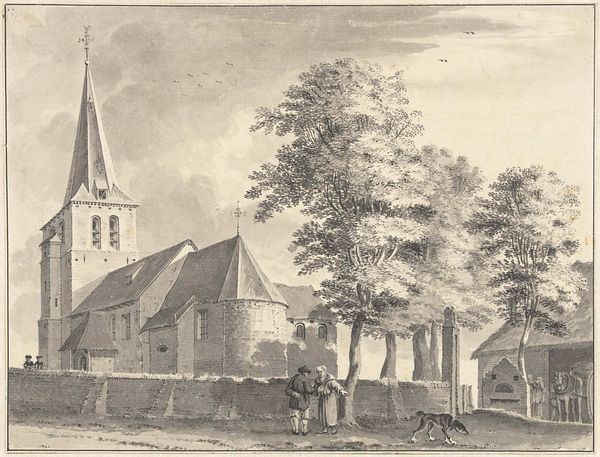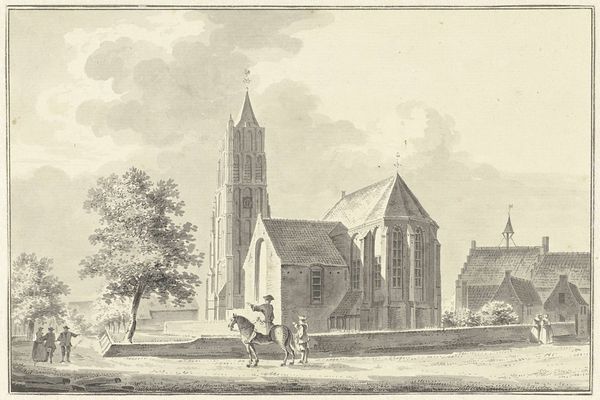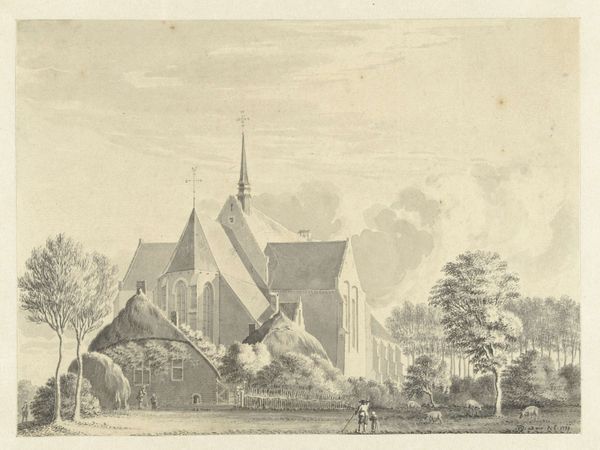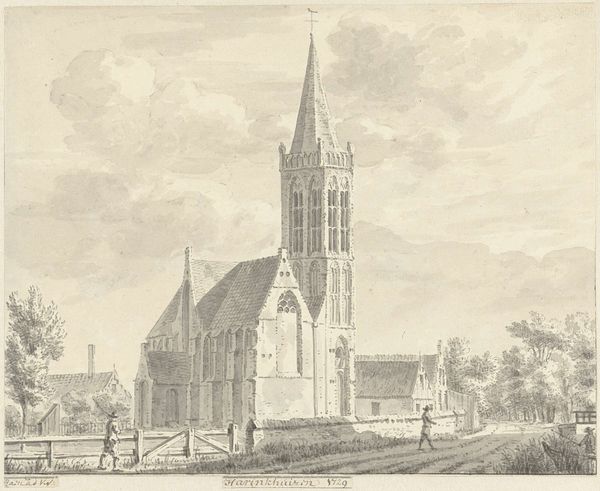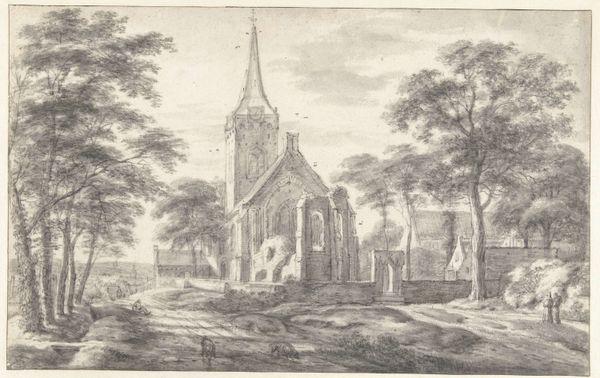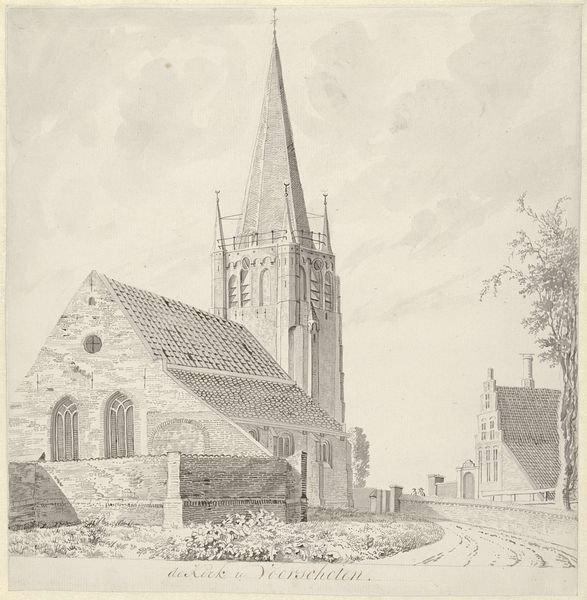
print, engraving
# print
#
old engraving style
#
landscape
#
history-painting
#
engraving
#
realism
Dimensions: height 183 mm, width 241 mm
Copyright: Rijks Museum: Open Domain
Editor: This is "Gezicht op een kerk" by Frederik Hendrik Weissenbruch, likely created between 1838 and 1887. It's an engraving, so the textures are so crisp. The overall composition is striking. What is your reading of it? Curator: It is compelling, indeed. Note the masterful manipulation of light and shadow to create a sense of depth and form. Consider how Weissenbruch uses line – its varying thickness and density – to articulate the architectural details of the church. See how the lines pull your eye from the spire down along the edges? Editor: So, you're seeing the structure first and foremost? What about the emotional aspect, or what it *means*? Curator: The arrangement of the composition precedes any other aspect. Emotional reactions can change, of course, but the material artifact endures, awaiting analysis. What purpose is served by ignoring line, composition, depth, or tonal modulation? Do these artistic manipulations convey a particular narrative? Or could we see the composition itself AS a story? Editor: So, you're less interested in a symbolic interpretation? Curator: While symbols have their place, they are also imposed. By focusing on the intrinsic qualities of the image – its lines, its shapes, the distribution of light and dark – we move closer to understanding the *essence* of the engraving. We can also look at the work in relation to similar structures. Consider, for instance, the Golden Ratio in comparison to this layout. Where do you see potential connections? Editor: I suppose, looking at it that way, I can see a certain harmony in the building's placement. It is thought-provoking to consider this in a purely visual, rather than a historical, context. Thank you for this different perspective! Curator: It is the materiality of art that endures, isn't it?
Comments
No comments
Be the first to comment and join the conversation on the ultimate creative platform.


